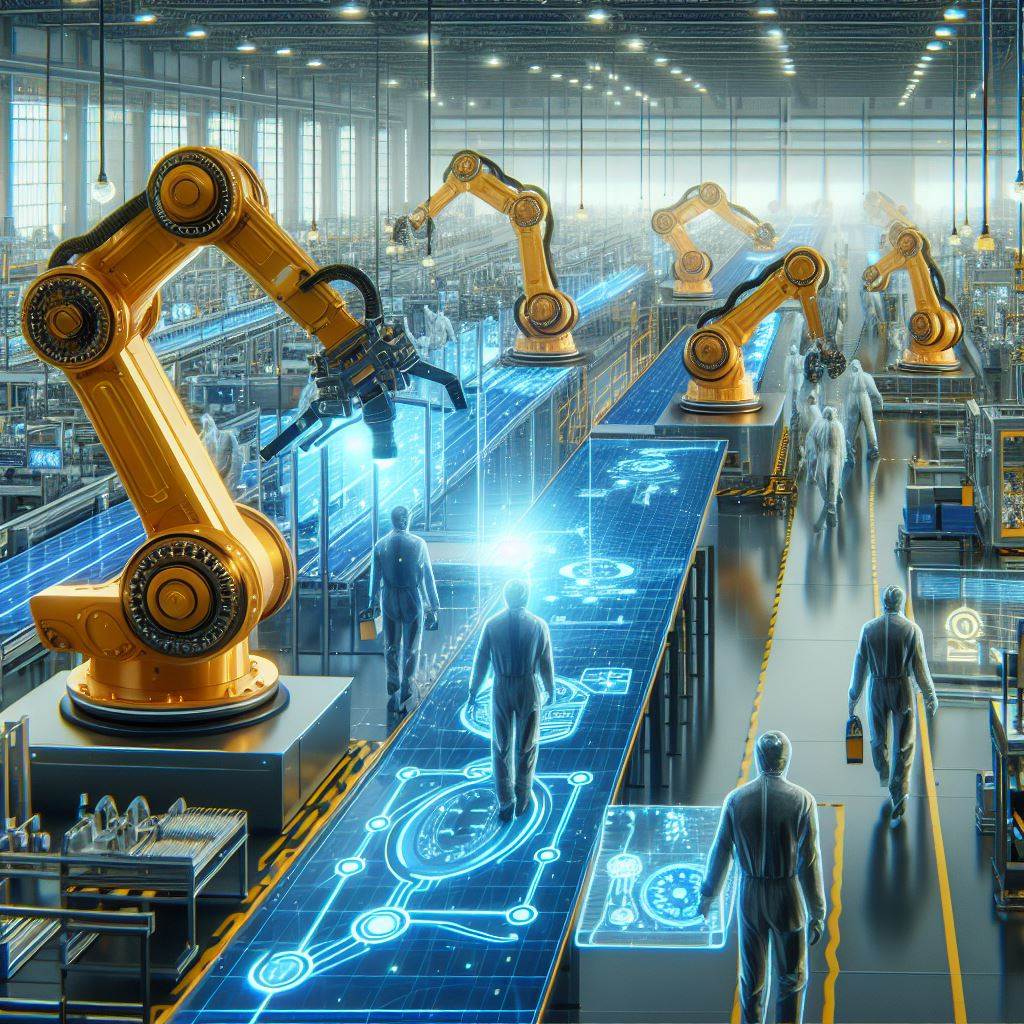
As industries accelerate their embrace of artificial intelligence (AI), many organizations find themselves grappling with unique challenges that hinder full-scale AI integration. These obstacles often stem from a complex relationship between technological readiness and human factors. Successful AI adoption requires managers to navigate these complexities by leveraging their emotional intelligence (EQ), understanding organizational culture, and managing internal politics. This blog post introduces a multi-frame approach to overcoming barriers to AI implementation, targeting managers who are at the forefront of these transformations.
The Current Landscape of AI Adoption
AI holds tremendous potential for enhancing business operations, decision-making processes, and overall organizational performance. However, the journey to successful AI integration is fraught with challenges. Managers often find that their effectiveness is deeply influenced by the organizational culture and internal politics within which they operate. According to Ernst & Young (EY), leaders equipped with EQ can significantly improve the chances of successful organizational change, particularly during transformations accelerated by AI (EY, 2021).
Importance of EQ and Organizational Dynamics
Managers can be both technically competent and emotionally intelligent but still encounter challenges that prevent them from realizing AI-related goals. Management development programs can improve EQ and help managers navigate challenging situations, but they cannot change the entrenched culture or politics within an organization. AI adoption requires a deliberate approach that involves understanding one’s strengths, weaknesses, and EQ levels, as well as the organization’s culture and political structure and history. Only with this understanding can managers effectively approach their development and AI governance, prevent bias, and foster a culture of psychological safety—all of which are crucial for successful AI adoption.
Defining Organizational Culture in the Context of Technology
Organizational culture comprises shared beliefs, values, customs, behaviors, and artifacts that shape how work is done. These shared values influence how individuals communicate and approach their work, determining the organization’s response to new challenges and opportunities. Cultures that value innovation and risk-taking tend to embrace AI projects with more enthusiasm, while those that prefer the status quo may resist (Schein, 2010).
Trust within the organization is also critical. High-trust environments enable experimentation and learning, essential for AI integration, as employees feel safe exploring new technologies without fear of reprisal. This sense of psychological safety allows employees to voice concerns, suggest improvements, and engage deeply with AI initiatives. Conversely, low-trust settings can stifle innovation and lead to reluctance in adopting AI (Edmondson, 2019).
How Cultural Values and Practices Influence AI Adoption
Cultural values and practices serve as the heart of every organizational culture, shaping attitudes towards new technologies including AI. Organizations that prioritize innovation create an environment where employees are encouraged to think creatively and experiment with new ideas. Adaptability is another critical value because it allows organizations to manage the rapid changes that come with AI implementation. Practices such as transparent communication and inclusive decision-making are vital for ensuring that AI initiatives are well-received across all levels of the organization. Recognition and reward systems that celebrate successes in AI projects can also reinforce positive behaviors and motivate employees to engage more deeply with AI initiatives (Kotter, 2012).
Organizational Politics and AI Implementation
Navigating power dynamics and political landscapes is another critical aspect of AI implementation. Organizational politics manifest through influence, relationships, and power dynamics among stakeholders, affecting project management aspects from lobbying for support to negotiating resources. Managers must skillfully navigate internal politics to secure support for AI initiatives, which may involve using their own political capital or enlisting others to advocate on their behalf. Effective management of these political and power dynamics is crucial for overcoming barriers and achieving successful AI integration (Pfeffer, 1992).
Leveraging Bolman and Deal’s Four Frames for Effective AI Integration
In their work “Reframing Organizations,” Bolman and Deal present a comprehensive framework for understanding organizational dynamics through four distinct lenses: Structural, Human Resources, Political, and Symbolic. Applying these frames to AI implementation offers valuable insights for managers:
1. Structural Frame: Focuses on the infrastructure and policies supporting AI implementation. Managers need to assess technological capabilities and identify necessary upgrades or changes (Bolman & Deal, 2017).
2. Human Resources Frame: Centers on the skills, attitudes, and well-being of employees interacting with new AI technologies. Empathy and social skills are crucial for understanding and addressing employee anxieties (Goleman, 1995).
3. Political Frame: Emphasizes the dynamics of power and politics within the organization. Managers must navigate stakeholder interests and manage resource allocation effectively (Pfeffer, 1992).
4. Symbolic Frame: Highlights the importance of culture, symbols, and communication in embedding AI into the organizational fabric. Inspirational leadership and effective use of stories and symbols can unite teams around the AI vision (Bolman & Deal, 2017).
Conclusion
The multi-frame approach offers a comprehensive strategy for managers to overcome obstacles to AI implementation. By understanding and addressing the cultural, political, and emotional intelligence dimensions of AI adoption, as well as having solid technical competencies, managers can significantly enhance their effectiveness in integrating AI technologies. This holistic approach not only ensures technological success but also promotes positive human impact, fostering a culture of innovation and continuous improvement.
If you’re ready to overcome the obstacles to AI implementation and lead your organization to success, we invite you to take the next step.
View the Strong AI Integration Framework: Gain a deeper understanding of how our multi-frame approach can help you navigate the complexities of AI adoption.
Contact Us for Coaching: Are you looking for personalized guidance to support your AI initiatives? Reach out to us today to learn more about our coaching programs designed to empower managers like you. Together, we can create a roadmap for successful AI integration that aligns with your organizational culture and strategic goals.
Email: tuesday@tuesdaystrong.com
Stay ahead of the curve and transform your organization with confidence. We look forward to partnering with you on this exciting journey!
References
• Bolman, L. G., & Deal, T. E. (2017). Reframing Organizations: Artistry, Choice, and Leadership. Jossey-Bass.
• Edmondson, A. C. (2019). The Fearless Organization: Creating Psychological Safety in the Workplace for Learning, Innovation, and Growth. Wiley.
• Ernst & Young. (2021). The Role of Emotional Intelligence in Business Transformations.
• Goleman, D. (1995). Emotional Intelligence: Why It Can Matter More Than IQ. Bantam Books.
• Kotter, J. P. (2012). Leading Change. Harvard Business Review Press.
• Pfeffer, J. (1992). Managing with Power: Politics and Influence in Organizations. Harvard Business School Press.
• Schein, E. H. (2010). Organizational Culture and Leadership. Jossey-Bass.
People, Process, and Data: Roadblocks and Solutions for AI Implementation in Manufacturing

Imagine a factory floor where robots seamlessly collaborate with human workers, machines predict and prevent breakdowns before they occur, and production lines autonomously optimize for maximum efficiency. This is the future that artificial intelligence (AI) promises to bring to the manufacturing industry [1, 4]. However, the path to this future is not without obstacles. Integrating AI into complex manufacturing environments requires navigating a series of challenges.
Hurdles to AI Adoption
One of the significant hurdles to AI adoption is a company’s digital maturity [1]. Organizations with limited digital infrastructure and a less skilled workforce face a steeper climb in implementing AI effectively. Investment in infrastructure upgrades and employee training are crucial for success [1].
Data quality and availability are another critical hurdle. AI systems rely on large volumes of clean, high-quality data to function effectively. Manufacturing environments often struggle with inconsistent data collection practices, making it difficult to ensure data quality meets the demands of AI applications [3].
Cultural resistance to change is another significant barrier. The introduction of AI can be met with skepticism and fear, particularly regarding job displacement [3]. Effective change management, clear communication, and employee education are essential to demonstrate how AI can augment human capabilities and create a more efficient and productive work environment [3].
Additionally, the complexity of AI systems and the need for specialized talent present further obstacles. Implementing AI often requires a workforce with skills in data science, engineering, and AI development, which can be scarce [5]. This talent gap can slow down AI adoption and increase reliance on external vendors, adding to the overall cost [5].
The customization required for AI applications in manufacturing is another significant challenge. Each manufacturing environment has unique needs and processes. Off-the-shelf AI solutions may not be effective, and customizing AI requires significant resources and expertise [4].
Finally, ensuring trust in AI systems is crucial for their successful implementation. Manufacturers need to understand how AI makes decisions to trust its recommendations and actions. Developing AI systems with transparency is essential for their acceptance and effective use in manufacturing environments [1].
Unleashing the Power of AI
Despite these challenges, the potential benefits of AI in manufacturing are undeniable. AI can automate repetitive tasks, improve quality control processes, optimize production scheduling, and drive predictive maintenance strategies [1, 3, 4]. This translates to significant gains in efficiency, reduced downtime, and improved overall equipment effectiveness (OEE).
Advanced AI applications can also analyze vast amounts of data to identify patterns and trends that humans might miss. This can lead to innovative product development, improved process optimization, and the creation of entirely new manufacturing paradigms [4].
As the industry continues to evolve, overcoming the challenges highlighted above will be key to unlocking the full potential of AI in manufacturing. By focusing on digital transformation, data quality initiatives, and a people-centric approach to change management, manufacturers can harness the power of AI to gain a significant competitive advantage.
Reference List
Claude.ai. (2024). https://claude.ai/chat/be9527c2-42bb-464f-a9a0-19fbcad54cb9
MIT Sloan Management Review. (2022, September 27). AI in manufacturing: Start with data, not complex AI systems. https://news.mit.edu/2023/ai-based-estimator-manufacturing-medicine-0503
PwC. (n.d.). Introduction to implementing AI in manufacturing. https://www.pwc.com/gx/en/industries/industrial-manufacturing/publications/introduction-implementing-ai-manufacturing.html
Valiot. (2023, September 12). Overcoming production challenges: Implementing artificial intelligence in manufacturing environments. https://valiot.io/blog/post/optimizing-production-line-efficiency-a-deep-dive-into-valiot-s-ai-driven-solutions?show=8
World Economic Forum. (2024, January 29). How we can unleash the power of AI in manufacturing. https://www.weforum.org/press/2022/12/ai-can-enable-a-new-era-in-manufacturing-sector-says-world-economic-forum-white-paper/
World Economic Forum. (2023, January 23). AI in the manufacturing sector: Barriers to adoption. https://www.weforum.org/agenda/2023/01/ai-manufacturing-sector-barriers-to-adoption/

